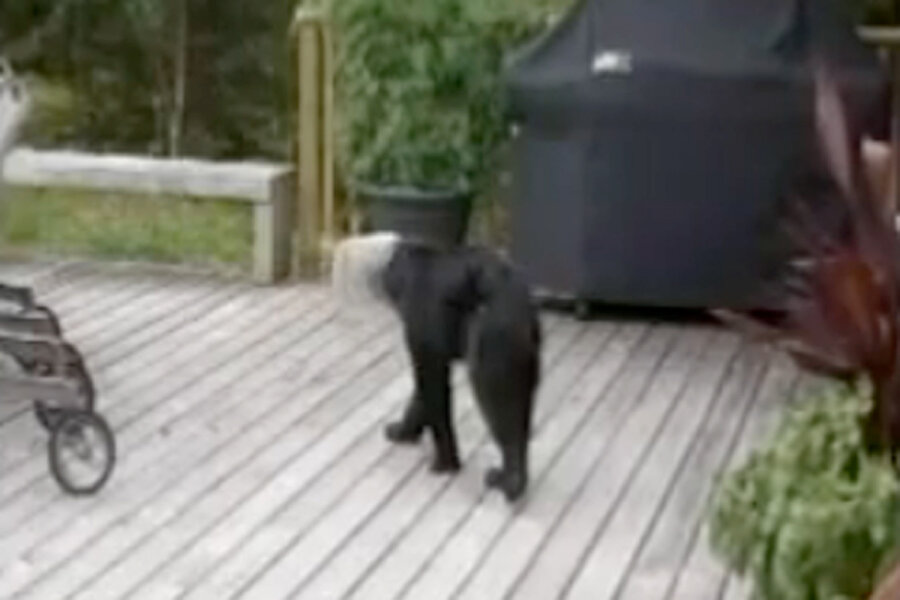Bear with jar stuck on head highlights dangers of humans [video]
For a human, getting caught with your hand in the cookie jar results in a slap on the wrist. But what happens when a bear gets its head stuck in the jar?
Underscoring the dangers posed from open landfills and disposable food containers, a Canadian bear has wandered around northwestern Ontario for the past two weeks with a plastic container stuck on its head.
"It’s a clear example of what humans can do to wildlife without having any specific intention to do so," says John Bennett, executive director of Sierra Club Canada, an environment monitor and lobbying organization. "This story illustrates that the lackadaisical way we approach maintaining our environment has specific implications on other species."
The bear was first spotted in early July at a dump, where officials say it was likely searching for food.
"He stuck his head inside a jar that had food in it. I've seen it happen with skunks where they get their heads stuck in jam jars," Ross Johnston, a conservation officer with Ontario's Ministry of Natural Resources, told Thunder Bay News television. The Ministry of Natural Resources estimates the province's bear population at 100,000.
Videos and photos show the bear growing emaciated and severely dehydrated.
It wandered into the Paterson family's backyard on Lambert Island (a peninsula into Lake Superior about 25 miles northeast of Thunder Bay).
"He wandered around the whole deck and tried to smell the flowers and eat the lettuce but clearly wasn't able to because of this horrible situation that he's in," Sharon Cole-Paterson told the news station. "And from there he meandered off across the bench and into the woods."
Further north, the far-flung city of Anchorage has struggled to help residents coexist with wild animals through a combination of education programs, incentives, and mandates to promote safety and to conserve of habitat. That means bear-resistant garbage containers on the city's outskirts, for one.
But bears will often find a way to muscle their way into garbage containers, warns Mr. Bennett of Sierra Club Canada, and the bigger problem is reducing the number of garbage at open landfills. This could come through increased use of returnable glass.
"The world was not such a bad place when you took your milk bottle back and got 10 cents for it," he says, speaking by phone today. "When people are given the option to return or recycle, people would gladly go back to returning the bottles."
In a possible reprieve for the Canadian bear, reports say that a Thunder Bay resident believes he found the jug that was stuck on the bear. Maybe. It could also be that Thunder Bay has littered a lot of jugs.
"The areas where our lives intersect with wildlife are where we need to be sure we take the greatest care," says Bennett. "We tend to put more emphasis on making it safe for humans than on making it safe for animals."
Related:





